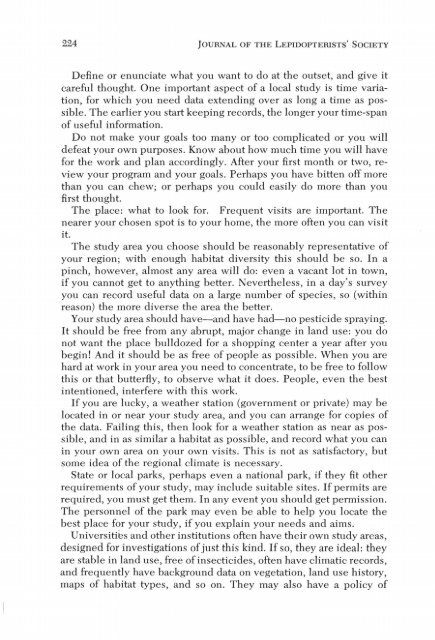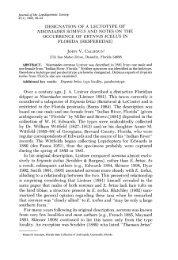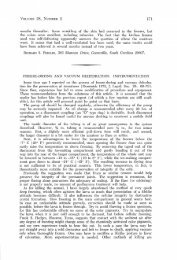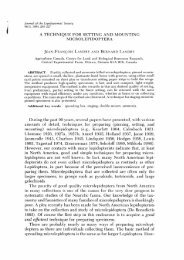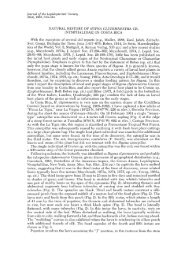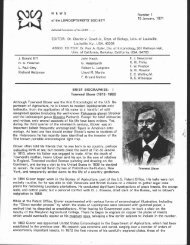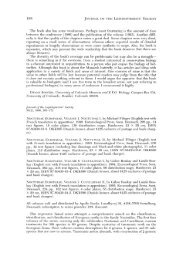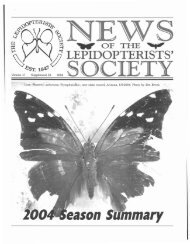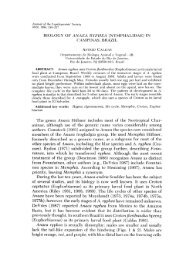HOW TO MAKE REGIONAL LISTS OF BUTTERFLIES - Yale University
HOW TO MAKE REGIONAL LISTS OF BUTTERFLIES - Yale University
HOW TO MAKE REGIONAL LISTS OF BUTTERFLIES - Yale University
Create successful ePaper yourself
Turn your PDF publications into a flip-book with our unique Google optimized e-Paper software.
224 JOURNAL <strong>OF</strong> THE LEPIDOPTERISTS' SOCIETYDefine or enunciate what you want to do at the outset, and give itcareful thought. One important aspect of a local study is time variation,for which you need data extending over as long a time as possible.The earlier you start keeping records, the longer your time-spanof useful information.Do not make your goals too many or too complicated or you willdefeat your own purposes. Know about how much time you will havefor the work and plan accordingly. After your first month or two, reviewyour program and your goals. Perhaps you have bitten off morethan you can chew; or perhaps you could easily do more than youfirst thought.The place: what to look for. Frequent visits are important. Thenearer your chosen spot is to your home, the more often you can visitit.The study area you choose should be reasonably representative ofyour region; with enough habitat diversity this should be so. In apinch, however, almost any area will do: even a vacant lot in town,if you cannot get to anything better. Nevertheless, in a day's surveyyou can record useful data on a large number of species, so (withinreason) the more diverse the area the better.Your study area should have-and have had-no pesticide spraying.It should be free from any abrupt, major change in land use: you donot want the place bulldozed for a shopping center a year after youbegin! And it should be as free of people as possible. When you arehard at work in your area you need to concentrate, to be free to followthis or that butterfly, to observe what it does. People, even the bestintentioned, interfere with this work.If you are lucky, a weather station (government or private) may belocated in or near your study area, and you can arrange for copies ofthe data. Failing this, then look for a weather station as near as possible,and in as similar a habitat as possible, and record what you canin your own area on your own visits. This is not as satisfactory, butsome idea of the regional climate is necessary.State or local parks, perhaps even a national park, if they fit otherrequirements of your study, may include suitable sites. If permits arerequired, you must get them. In any event you should get permission.The personnel of the park may even be able to help you locate thebest place for your study, if you explain your needs and aims.Universiti~s and other institutions often have their own study areas,designed for investigations of just this kind. If so, they are ideal: theyare stable in land use, free of insecticides, often have climatic records,and frequently have background data on vegetation, land use history,maps of habitat types, and so on. They may also have a policy of


